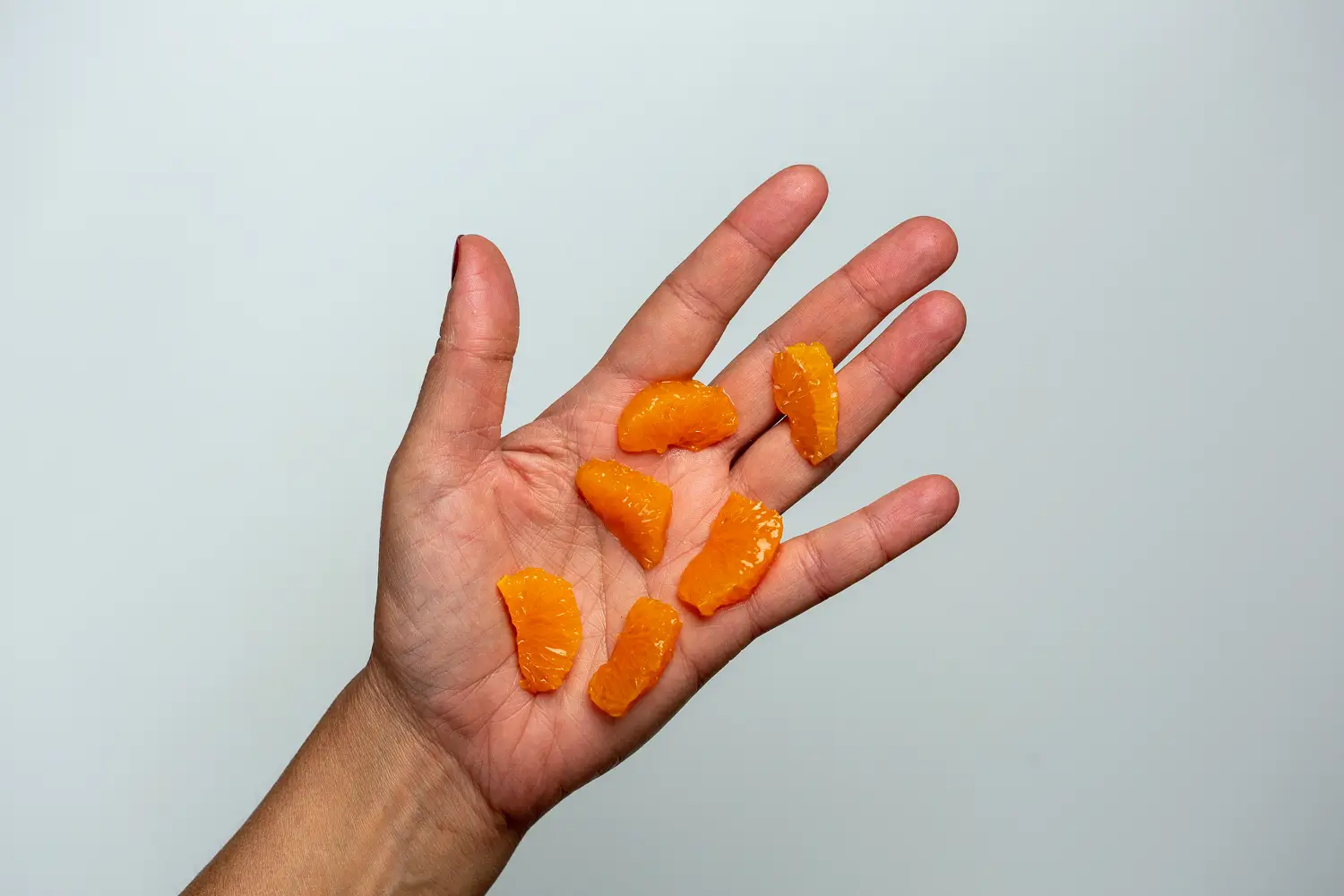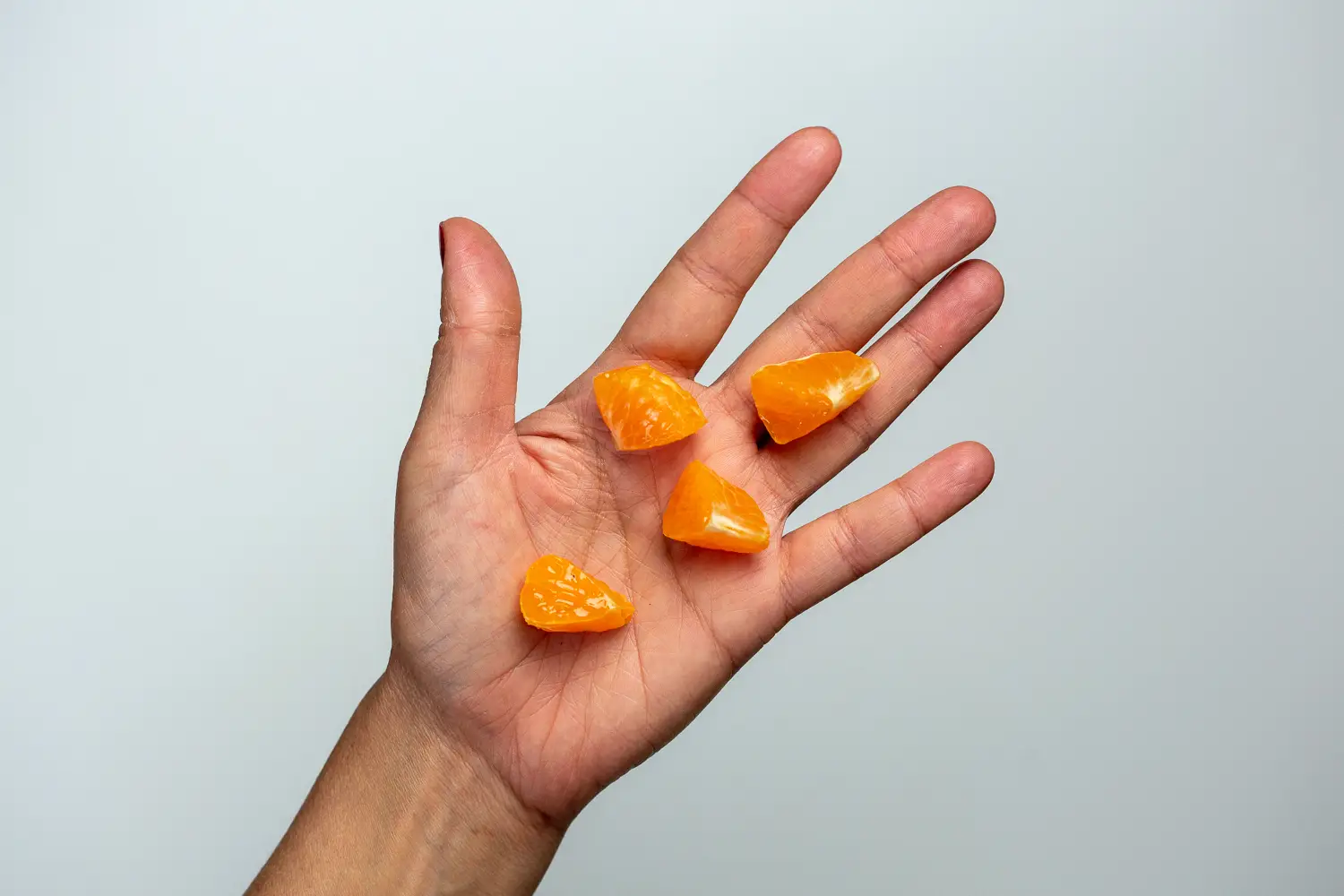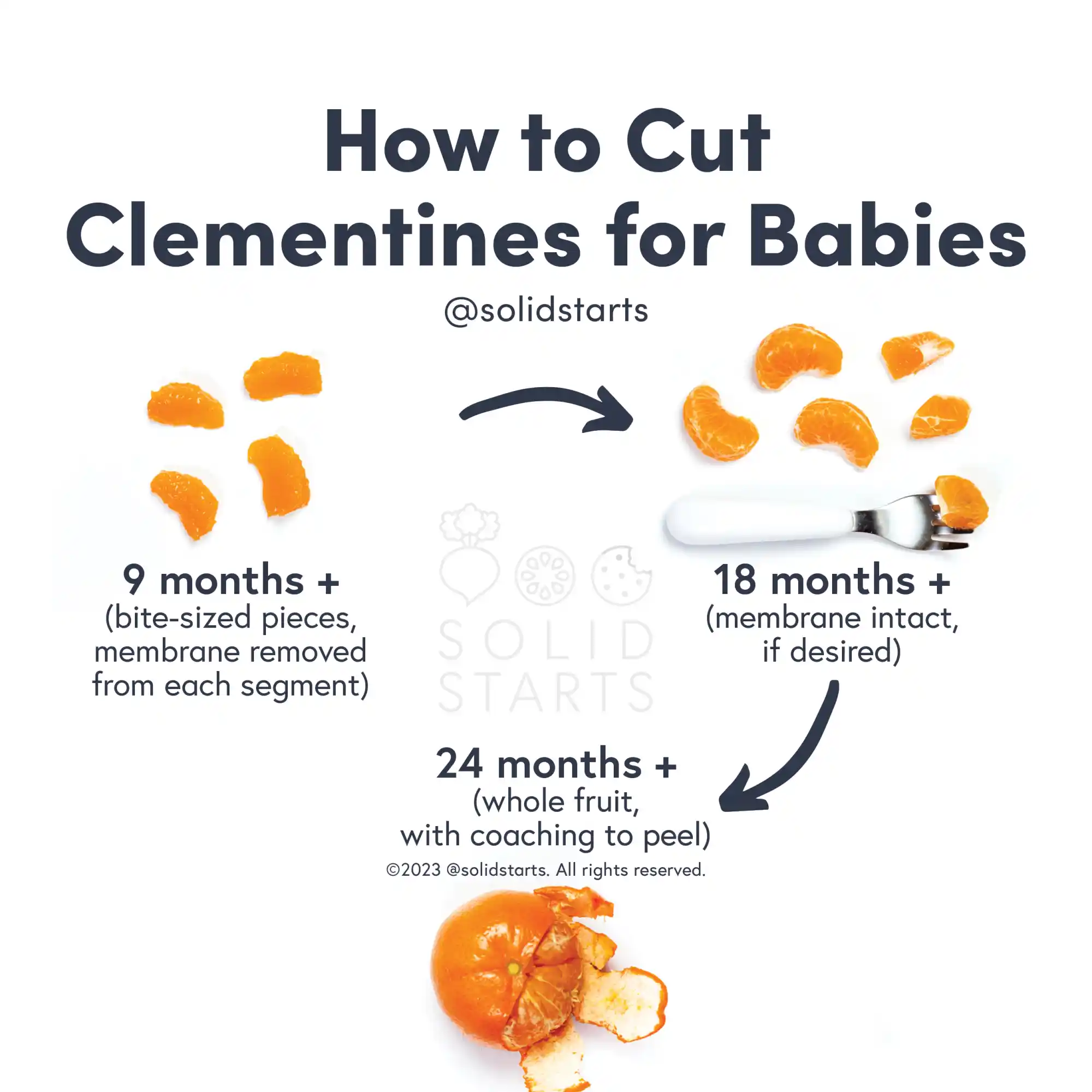Access our First Foods® Database in the Solid Starts App.
Learn moreClementine
Fruit
Age Suggestion
6 months
Iron-Rich
No
Common Allergen
No

When can babies have clementines?
Clementines may be introduced as soon as baby is ready to start solids, which is generally around 6 months of age.
Clementines are on the smaller side, with a bright orange rind and sweet, juicy flesh that is less acidic than oranges and other citrus fruit. They are descendants of the mandarin and the sweet orange—a happy pairing many years ago in Algeria or China (the origin is disputed) that led to clementine groves growing in sunny climates around the world.
How do you serve clementines to babies?
Every baby develops on their own timeline, and the suggestions on how to cut or prepare particular foods are generalizations for a broad audience.
6 months old +:
Offer mashed clementine segments with the membrane and any seeds removed. To make the fruit easier for baby to eat, consider serving the mashed clementine on top of scoopable foods such as yogurt. Remember that clementines, mandarins, and other small citrus fruit segments left in their membrane can be a choking hazard.
9 months old +:
Cut the clementine top off (as shown in video) and lift each segment out of each membrane pocket and offer as bite-sized pieces. Remember that clementines, mandarins, and other small citrus fruit segments left in their membrane can be a choking hazard, so when in doubt, remove the fruit from the membrane.
18 months old +:
If you feel comfortable with a toddler’s chewing and swallowing skills, consider offering clementine segments cut in half, with the membrane intact. Once the child has demonstrated that they can chew these pieces, consider working up to whole clementine segments, coaching the child to take bites (rather than popping the whole segment into their mouth.) Of course, you can also continue to offer bite-sized pieces of segments with the membranes removed. Around age 2, you may find children are ready to learn how to peel a whole clementine, a terrific activity for practicing fine motor skills.


Reducing the risk of choking with citrus like clementines and mandarins.
How to cut clementines and mandarins for babies.
Videos
Are clementines a choking hazard for babies?
Yes. Citrus segments (if left in the surrounding membrane) have small, tapered ends and a mixed, slippery consistency, qualities that increase the risk of choking. To reduce the risk, prepare and serve clementines in an age-appropriate way as described in the How to Serve section. As always, make sure to create a safe eating environment and stay within reach of baby during meals.
Learn the signs of choking and more about choking first aid in our free guides, Infant Rescue and Toddler Rescue.
Are clementines a common allergen?
No. However, self-reported sensitivity to citrus is described frequently in medical literature around the world. Individuals with Oral Allergy Syndrome (also called pollen food allergy syndrome) may be sensitive to citrus fruit such as clementines. In particular, individuals who are sensitive to grass and certain tree pollens may also be more sensitive to citrus fruits. Oral Allergy Syndrome typically results in short-lived itching in the mouth and is unlikely to result in a dangerous reaction.
In some cases, allergy to proteins in orange can result in serious reactions. There is evidence to suggest that the major allergens causing serious allergic reactions to clementines (and oranges) are concentrated within the seed of the fruit—and while uncommon, chewing the seeds may be responsible for allergic reactions.
There are also reports of clementine (and orange) ingestion contributing to eczema. In addition to being sweet, many oranges are also acidic, and the acid in citrus fruit can cause a harmless rash on the skin, typically around the mouth. It usually dissipates shortly after it shows up.
As you would when introducing any new food, start with a small amount at first and follow baby’s lead.
Are clementines healthy for babies?
Yes. Clementines are rich in carbohydrates, fiber, and fluid, in addition to vitamins A, B6, and C. They also offer potassium, folate, and antioxidants like flavonoids. Together, these nutrients work together to provide energy to fuel baby’s play and development, support digestive health, and aid in hydration. These nutrients also support vision, metabolism, immune function, electrolyte balance, nervous system functioning, and bodily repair and recovery.
Like grapefruit, clementines may interact with medications. If your child is taking medications, consider talking to your child’s health care provider to learn more.
When can babies drink clementine juice?
Small amounts of clementine juice may be shared as a drink after 12 months of age. That said, it can be beneficial to wait until after a child is older to regularly share juice and other sugary drinks. Research suggests that regular intake of juice and other sweet drinks tends to increase the risk of dental cavities and take up space in the belly, which may decrease a child’s motivation to eat other foods at mealtime and may negatively affect the child’s growth. However, occasional servings of juice after one year of age generally isn’t a cause for concern. Learn more about serving juice to babies and toddlers.
Our Team
Written by
Expert Tips Delivered to Your Inbox
Sign up for weekly tips, recipes and more!
Copyright © 2025 • Solid Starts Inc








